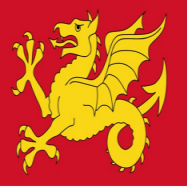Thoughts on WSPR and propagation monitoring
"WSPR includes a "Coordinated hopping" mode in which the selected band is determined by the starting UTC minute of a Tx/Rx interval:
UTC Band
Minute (m)
----------------
00 160
02 80
04 60
06 40
08 30
10 20
12 17
14 15
16 12
18 10
20 160
22 80
... etc
This sequence of ten possible bands repeats three times each hour. If the designated band has not been checked as an active band, a random choice is made among the active bands."
Thoughts / ideas for further discussion:-
Could an additional "Coordinated hopping" option be added to the existing WSPR extension so that more than one WSPR band could be automatically covered by a single KiWi receiver ?
Could each KiWi running the WSPR extension build up a list of stations heard including for each one frequency (band) / locator / transmit power and received S/N. This data could then be processed and the S/N value adjusted to a normalised value by taking into account the transmitter power in use.
The data gathered (as above) could then be processed either on the KiWi (if it is capable) or on a centralised website to give an indication of propagation on each frequency, distance, bearing and normalised S/N value. These parameters could then be used to produce a real time propagation map for each SDR.
In order to reduce the amount of processing required maybe just a few 'known good' WSPR beacon stations in each region could be used, rather than having to process lots of stations who only transmit occasionally. This data could perhaps be dynamically populated from the usage stats on the WSPR.NET site.
Obviously this would work a lot better if WSPR could run as a background task on each SDR when there was a spare receiver slot available (as previously discussed at some length), but even in it's basic form I think it could provide some useful data.
Discuss...............
Regards,
Martin - G8JNJ

Comments